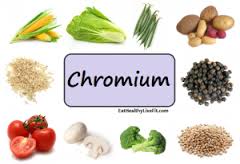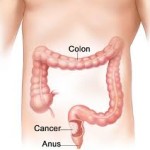 Did you know there are 92 elements found in nature and an additional 22 which are observed elements or scientists believe exist but have not been able to prove. In addition to all of those, there are also hundreds of isotopes of those elements, any one of which may play an important role in human health.
Did you know there are 92 elements found in nature and an additional 22 which are observed elements or scientists believe exist but have not been able to prove. In addition to all of those, there are also hundreds of isotopes of those elements, any one of which may play an important role in human health.
Trace minerals are required in very small amounts to support your health. And, while scientists and doctors believe they have identified many of the trace minerals required by the body for optimal health, they are required in such minute amounts and there are so many different trace elements, it is highly unlikely that physicians and scientists have identified all of them.
Minerals play a very important part in the biochemistry of the body. Vitamins cannot be assimilated or used without the aid of minerals and, although the body can make some of the necessary vitamins, it cannot make any of the minerals required. These trace minerals can be found in the bones, teeth, soft tissue, blood, muscle and nerve cells. They act as a catalyst for many of the biological reactions which happened inside the body including neurotransmitters which send messages through the nervous system and the utilization of nutrients in food.
Most of us, who eat a balanced diet made up of a variety of foods, do not need special supplements in order to maintain adequate and safe levels of these trace minerals. But, even though they are required in such minute amounts, do not be fooled into thinking that they are not a requirement.
Under certain circumstances some individuals may find that they do need supplementation in order to maintain adequate levels. Women who are pregnant, who have an abnormally heavy menstrual flow, recuperating after surgery or who have gastrointestinal malabsorption syndromes, such as Crohn’s disease, may require supplementation to meet their special needs. As with other vitamins and minerals there is a point at which you can receive too much and suffer from toxic side effects.
Before including trace mineral supplementation in your dietary regimen speak with your primary care physician or dietitian so that you can receive specific recommendations which meet your individual needs. Also, check the labels and don’t take more than 150% of the recommended daily allowance because, taken in large amounts, these minerals can be harmful to your health.
Some of the more common trace minerals include iron, zinc, calcium, selenium, manganese, copper, fluoride, iodine and chromium. Most of us know that calcium is important for building strong bones and teeth and preventing osteoporosis. However, did you know that it is also important in the maintenance of a regular heartbeat, the transmission of nerve impulses and to help prevent cardiovascular disease and lower cholesterol levels? Calcium is often used in the treatment of migraine headaches and recommended for individuals who suffer from Attention Deficit Disorder. It can decrease the risk of colon cancer and reduce the formation of polyps, lower blood pressure and prevent anxiety and insomnia. (1,2,3)
 Chromium is involved in metabolism of glucose and also vital in the breakdown of fats, proteins and cholesterol. Chromium helps maintain adequate blood sugar levels and can help prevent sugar cravings. It has been recommended for the treatment of migraine headaches and has some significant ability to treat psoriasis and acne. (4) Copper is used in the formation of bone, hemoglobin in red blood cells and works with vitamin C and zinc to form elastin. Elastin is the chief component in skin tissue and muscle fiber.
Chromium is involved in metabolism of glucose and also vital in the breakdown of fats, proteins and cholesterol. Chromium helps maintain adequate blood sugar levels and can help prevent sugar cravings. It has been recommended for the treatment of migraine headaches and has some significant ability to treat psoriasis and acne. (4) Copper is used in the formation of bone, hemoglobin in red blood cells and works with vitamin C and zinc to form elastin. Elastin is the chief component in skin tissue and muscle fiber.
Iodine is important in the function of the thyroid gland which regulates the body’s energy production, helps burn fats and controls the rate of metabolism. It is used in the formation of hemoglobin and the production of DNA. Some physicians use iodine supplementation to help treat restless leg syndrome and stimulate the immune system.
Magnesium is a trace mineral that is necessary for the metabolism of calcium and vitamin C. It regulates neuromuscular activity of the heart and improves energy production. Magnesium has been found to be important in many systems within the body, including the treatment of fibromyalgia, migraine and tension headaches, premenstrual syndrome, rheumatoid arthritis, hearing loss, binge eating, high blood pressure, controlling bad breath and body odor, fighting depression, preventing calcium deposits in promoting the relaxation of bronchial muscles in the airways making it easier for people with asthma to breath. (5)
Manganese is needed for protein and fat metabolism as well as normal bone growth and a healthy nervous system. It is also used in the formation of cartilage, necessary for proper digestion and functions in many enzyme systems. (6) Molybdenum is a trace mineral needed by the body in very small amounts and provides energy and vigor by aiding in carbohydrate and fat metabolism.
Phosphorus is needed for blood clotting, bone and teeth formation and cell growth as well as the contraction of the heart muscle and maintaining a normal heart rhythm. Potassium is an important electrolyte for a healthy nervous system and a regular heart beat. Selenium is an antioxidant which helps to protect cell membranes and preserve tissue elasticity. It also protects against cataract formation and helps relieve hot flashes during menopause. Researchers have found that selenium will help raise the sperm motility and improve fertility in men as well as protect against a variety of viral infections. (7)
Silica is necessary for the formation of collagen and promotes healthy nails, skin and hair. And zinc is responsible for over 300 enzymes in the body to work and function properly. It is the essential in protein synthesis and helps in the formation of insulin. It is also important for blood stability and critical for the male sex drive and sperm formation. Researchers also found that it decreases the length and severity of the common cold and may also help treat acne.
These are only a small part of the ways in which trace minerals are used in the body. Although they are required and only small amounts, without them we would not function optimally.
References:
(1) Dr Richard Jensen: Headaches Can Be Relieved with Calcium and Vitamin D
http://www.pr.com/press-release/187077
(2) University of Maryland Medical Center: Migraine Headaches
http://www.umm.edu/patiented/articles/what_causes_migraine_headaches_000097_3.htm
(3) National Cancer Institute: Calcium and Cancer Prevention: Strengths and Limits of the Evidence
http://www.cancer.gov/cancertopics/factsheet/prevention/calcium
(4) Linus Pauling Institute Oregon State University: Chromium
http://lpi.oregonstate.edu/infocenter/minerals/chromium/
(5) University of Maryland Medical Center: Magnesium
http://www.umm.edu/altmed/articles/magnesium-000313.htm
(6) MedlinePlus: Manganese
http://www.nlm.nih.gov/medlineplus/druginfo/natural/182.html
(7) Sutter Health: Male Infertility
http://www.sutterhealth.org/healthwise/index.cfm?A=C&hwid=hn-1040005


Leave a Reply